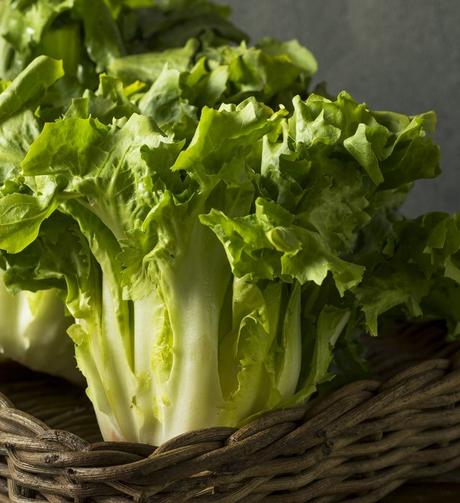
Belonging to the chicory family, escarole is a leafy green vegetable that tastes somewhat bitter and has a flavor comparable to radicchio and dandelion greens. It can be eaten fresh or cooked. Escarole is commonly added to numerous recipes as it retains some of its flavors without overpowering the rest of the ingredients, making it taste fantastic in soups and salads.
Are you making a dish that requires this ingredient but don't have it on hand? Use these escarole substitutes to recreate the flavor profile of the original.
1. Spinach
Spinach is a low-calorie superfood that is high in vitamins, minerals, and antioxidants. It has an earthy and mild flavor profile that can be somewhat bitter, similar to escarole. Spinach is also a versatile ingredient that can be fried, baked, or eaten raw, and it seamlessly integrates into several dishes to make them healthier.
Because spinach has a slightly bitter flavor (that does disappear when cooked), it can be used to replace escarole in smoothies, salads, casseroles, soups, and more. It also pairs exceptionally well with cheese, butter, eggs, and seasonings.
1 cup of escarole = 2/3 cup of spinach (add 1/3 cup curly endive if needed).
2. Kale
Kale belongs to the mustard family but is more closely related to cabbage. There are several types of kale, with curly kale most closely resembling the outer leaves of escarole. It has a peppery, bitter flavor and a tough, crunchy texture, which makes it a good substitute for escarole in soups, casseroles, and lasagnas.
Kale also has several health benefits and is commonly available in supermarkets, making it a healthier, more accessible alternative to escarole. When using it in cooking meals or to prepare shakes, just make sure to combine kale with other greens to provide a nice flavor to your recipe.
1 cup of escarole = 4/5 cup of kale + 1/4 cup of mixed greens.
3. Arugula
Arugula, an Italian staple, is a popular edible green related to both cabbage and mustard greens. It has a lemony citrus aroma and a spicy, peppery, mustard-like flavor. Arugula is also somewhat bitter, quite similar to escarole. Capers, walnuts, cheese, tomatoes, and pears pair well with it, as do olive oil, garlic, lemon, and avocado.
Although the flavor profile of arugula - which is lighter and more delicate - does not quite equal that of escarole, it can be still used as a substitute. You can use arugula cooked or raw in spring salads, salsa, pasta, sauteed veggies, tomato sauces, or eggs. It's also readily accessible year-round in most grocery stores, earning it bonus points as a substitute ingredient.
1 cup of escarole = 1 cup of arugula.
Or 1 stalk of escarole = 2 arugula leaves + 1 curly endive leaf + 1 cabbage leaf (remove the midrib before use).
4. Radicchio
Radicchio looks like red cabbage because of its red-purple leaves with long, white ribs, but it's actually a type of chicory often used in Italian cooking. It has a more pronounced bitterness than escarole, is more herbaceous in flavor, and has a hint of spiciness that is noticeable when eaten raw.
While radicchio has a stronger bitter flavor, it tones down considerably once cooked. When using it as a substitute for escarole, remember that radicchio's bitter flavor works well in green crunchy and acidic salads, as a topping for pasta and pizza, and when it is grilled or roasted. Radicchio also has a different color than escarole, so using it as a substitute will alter the color of your dish.
1 cup of escarole = 1 cup of radicchio.
5. Swiss Chard
Swiss chard, also known as chard or leaf beet, is a leafy green that comes in a variety of beautiful colors, including green leaves with splashes of golden and red. It has a flavor characteristic comparable to spinach but tends to be more bitter.
When cooked, Swiss chard loses its bitterness and gains a sweetness and earthiness that can enhance the flavor profile of any dish. If you want to use it to replace escarole, remember that while Swiss chard has large leaves with a wonderful texture, it takes longer to cook. But once cooked properly, you can use it in a variety of side dishes such as soups, stews, dipping sauces, as well as in pizzas, and risotto.
1 cup of escarole = 1 cup Swiss chard.
If you want a quick flavor substitute:
1 cup of escarole = 1/4 part of Swiss chard + 4/5 parts curly endive.
6. Romaine Lettuce
Similar to escarole, romaine lettuce features dark, robust outer leaves and sweet, tender inside leaves. It's crunchy and filling and has a mild, neutral flavor that won't overshadow other ingredients in your recipe but will enhance their complexity.
Because it has a neutral flavor, you may use romaine lettuce for escarole in a variety of dishes. Its fragrant, sweet-flavored leaves pair beautifully with several ingredients in salads and veggie-based dishes. Romaine lettuce is also low in calories and high in nutritional content, so feel free to use it as needed in your diet-friendly dishes guilt-free.
1 escarole leaf = 3 romaine lettuce leaves.
7. Frisée
Frisée, like escarole, belongs to the chicory family. It has narrow, curly, slender leaves with pale-yellow tips that give meals a bitter flavor and can thus be substituted for the original ingredient.
Frisée has tender leaves, which contrast with the tougher leaves of escarole. But don't worry; this hardy green won't turn mushy or ruin your dish when coupled with warm ingredients. Salads, poached eggs, and side dishes all benefit from the addition of the lush green frisée. Just make sure to use fresh leaves for a more vibrant flavor, and add more seasonings to make it taste like escarole. Start with a small amount and then adjust to taste.
1 cup of escarole = 1 cup of frisée.
